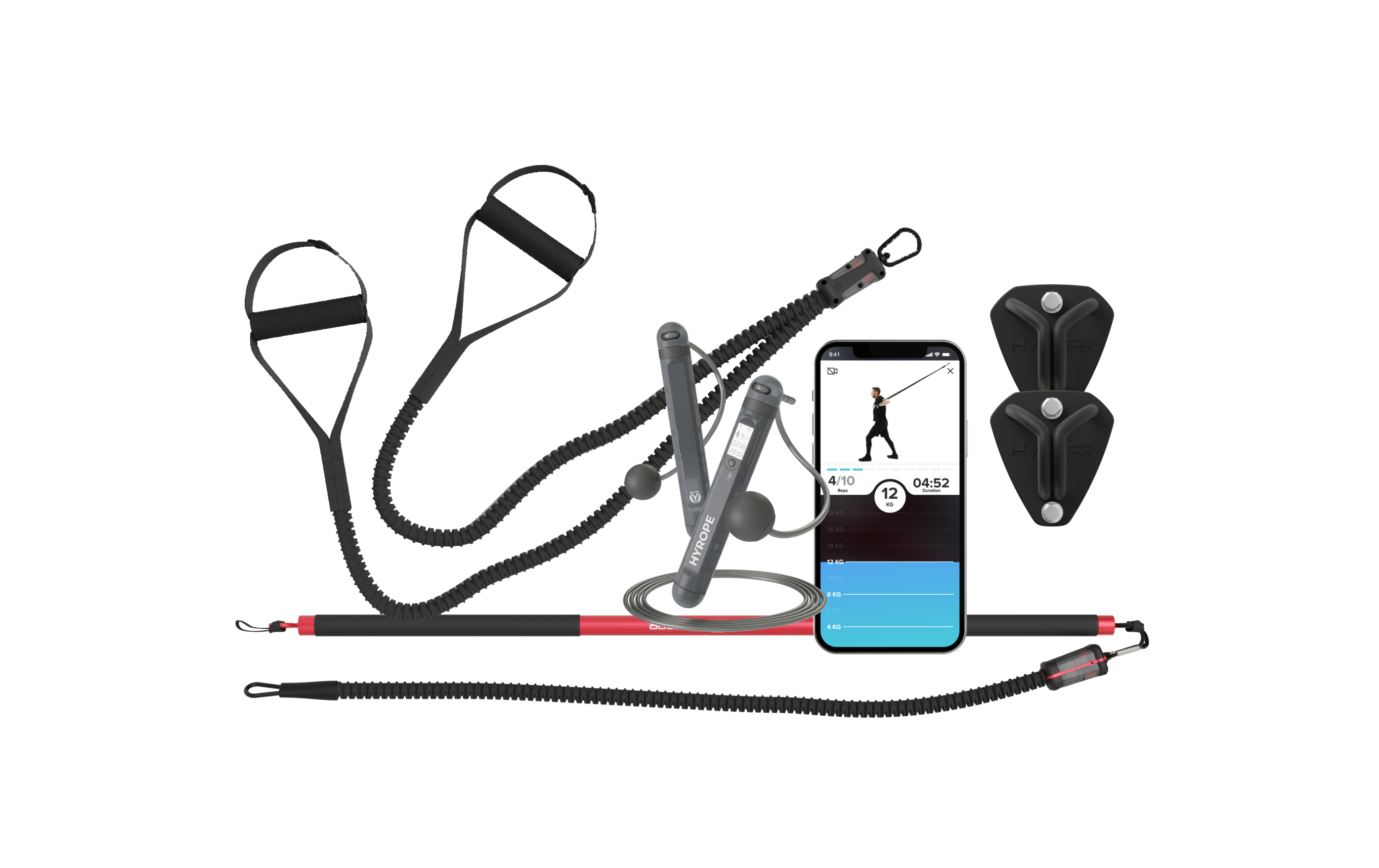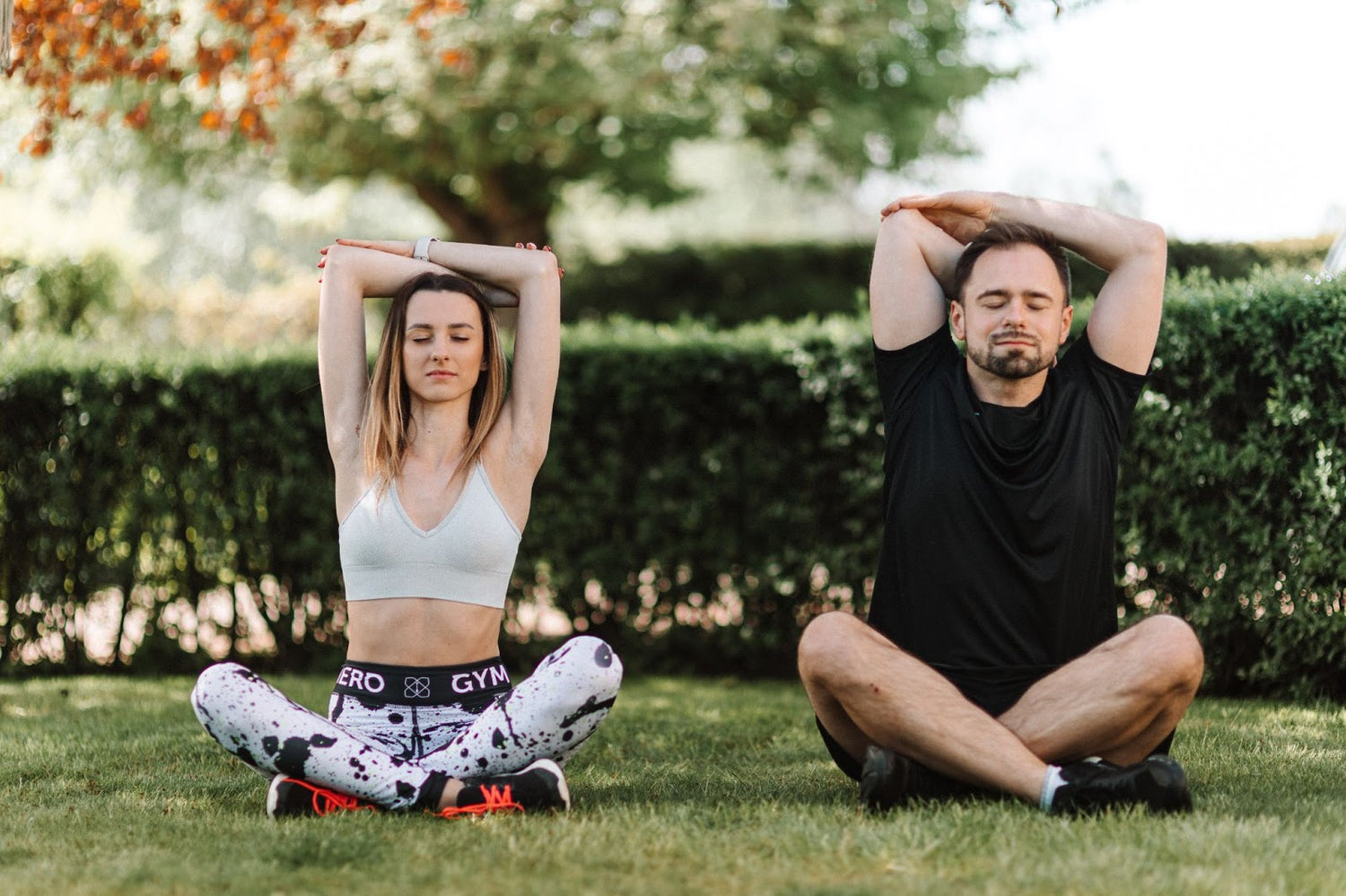Do you remember your elementary school gym class when your P.E. teacher told you to run a few laps and then stretch? That’s when most of us first learned how to stretch -- hold each stretch for roughly ten seconds, and you’re ready to go.
At the time, dynamic stretching was nowhere in the public consciousness because we were conditioned to believe that static stretching was the best way to warm up our muscles prior to exercise.
Well, believe it or not, research studies today now show that static stretching before exercise is not as beneficial as dynamic stretching, with some experts even saying that it can hurt your overall performance. We know, *mind blown*.
In this post, we’ll cover everything you need to know about dynamic stretching, including how it differs from static stretching and why it’s better for your pre-workout routine. Are you ready?
First Things First. What Exactly Is Dynamic Stretching Anyway?
Exercising is one of the best things you can do for your body. It doesn’t just keep you in great shape, but working out can do wonders to keep certain diseases at bay.
However, before you can start exercising, your muscles and joints need to be in the correct form. We don’t want you to succumb to any mobility issues during your sweat sesh because of tight muscles, now do we?
This is where stretching comes into play -- stretching is naturally intuitive. For instance, when you let out a big yawn and stretch, you later feel good, right? Stretching has a way of making your body feel invigorated. That’s why it has been increasingly incorporated in exercise and workouts over time, and its form evolved for max benefit.
Dynamic stretches are one of these incredible evolutions. Simply put, these are active movements that involve stretching your muscles to their full range of motion. In most cases, dynamic stretching imitates the physical activities that you’re about to engage in. For example, a swimmer may circle their arms before getting into the water to swim laps.
Dynamic stretches are known to increase your power, speed, agility, endurance, and acceleration. This has been attributed to the fact that these effective exercises tend to excite your muscles sooner rather than later. And as a result, your coordination is greatly improved.
Hold Up -- What’s The Difference Between Dynamic Stretching And Static Stretching?
Great question! We already covered what dynamic stretching is, so let’s quickly go over static stretching, shall we?
Static stretching is probably the most common type of stretching there is. In a nutshell, you stretch a muscle or group of muscles by holding the stretch for a period of time, usually around 20 to 60 seconds. This is a very effective way to increase your overall flexibility.
OK, so is static stretching better for your pre-workout routine?
Not exactly. Static stretches should be used as part of your cool-down when your muscles are already warm to help prevent injury. Using static stretches as a maintenance stretching program is also a good idea.
But using static stretching in a warmup prior to working out may actually negatively impact your performance. Why? Because this form of stretching may decrease muscle power -- that’s why.
Advantages Of Dynamic Stretching
Dynamic stretches have a ton of fantastic benefits, including:
Benefit #1: It Warms Up Your Muscles
Many individuals believe that they should stretch as part of their warmup routine, and they’re not wrong. However, static stretching isn’t appropriate before a workout -- only after. While these stretches will lengthen your muscles, the lack of movement in static stretching will leave you cold and unprepared to hop into a tough workout.
The movement of dynamic stretching, on the other hand, gets your muscles all warm and toasty, helping you ease into the workout.
Benefit #2: It Gets Your Blood Pumping
Another great benefit of dynamic stretching is that it helps to get your blood pumping.
It’s not just your muscles that need to prepare prior to a hard workout -- it’s your cardiovascular system, too. You see, it’s a lot harder on your ticker to ramp up the number of beats per minute over a short period of time vs. a long one. This is especially true if you happen to work a desk job or live a relatively sedentary life.
Increasing circulation through dynamic stretches will deliver oxygen and other nutrients to your body much more quickly, which will ultimately help your body to feel more energized and less fatigued.
Benefit #3: It Reduces The Risk Of Injury
Diving straight into your workout might seem like an excellent idea -- that is, right until you twist a joint or pull a muscle because you didn’t warm up properly!
When done correctly, warming up with dynamic stretches can improve your athletic performance and help prevent injury. As you stretch, your body and muscle temperature will rise, which will increase the oxygen and blood flow throughout your body.
This boost in circulation will warm up your muscles, significantly reducing your chances of hurting yourself during your workout.
As mentioned, static stretching, on the other hand, should be used as part of your cool-down. Again, this will help prevent you from succumbing to any injuries and give you a golden opportunity to stretch sore and aching muscles.
Benefit #4: It Shortens Recovery Time
Not only do dynamic stretches help reduce your risk of getting an injury, but they also help speed up your recovery time as well as aid in post-workout muscle soreness. This is because warmed muscles are more limber and move more easily, which helps reduce stiffness during and after the workout itself.
The increased circulation caused by dynamic stretching -- and the increased nutrients and oxygen that come along with it -- also help sore muscles repair themselves while you workout.
Shortening your recovery time means that you won’t have to take as many days off to recover as you normally would, meaning you can rest and get right back to working out as soon as possible to reach your fitness goals sooner than later!
Bottom Line
When it comes to your pre-workout routine, dynamic stretches are best to boost circulation and warm up your muscles. After you exercise, you can then perform static stretches as part of your cool down.
Want to get an even deeper stretch? Try doing some dynamic stretches with GEAR 1 from HYGEAR! Training with GEAR 1 allows you to work every muscle from every angle to more closely resemble common movements than gym workouts with weights do. Simply put, GEAR 1 is training for life.
Check out HYGEAR and get in gear today -- trust us, you’ll be glad you did!
Sources:
Do I need to stretch before exercising? | NHS
Why Pre-Workout Static Stretching Is Actually Dangerous. |Scientific American








Leave a comment
This site is protected by hCaptcha and the hCaptcha Privacy Policy and Terms of Service apply.